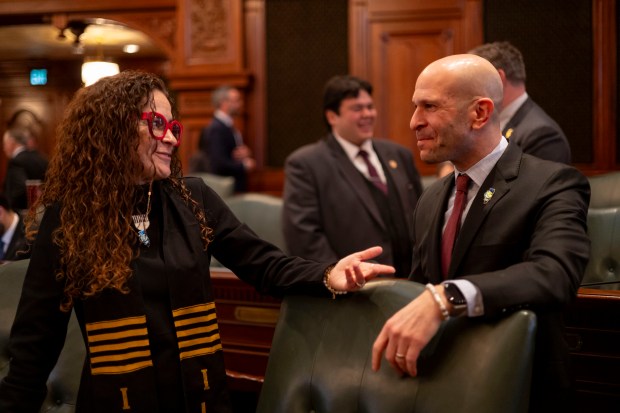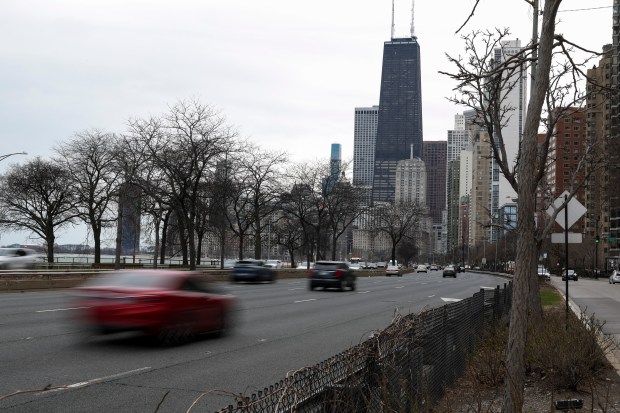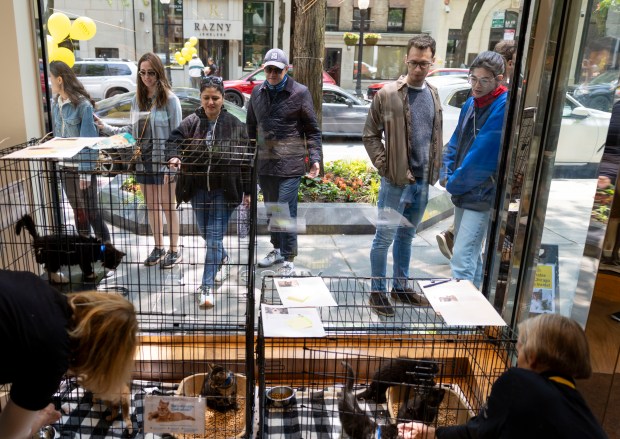The town of Porter hopes to build on the advantage of its proximity to the Indiana Dunes parklands by developing a trail of pollinator native gardens throughout the community.
There are manifold environmental and aesthetic benefits that can be potentially reaped, town officials believe.
The Porter Town Council recently gave its blessing to the town’s Environmental Sustainability Commission to proceed with establishing the pollinator natural gardens at two locations — the Town Hall and Hawthorne Park.
“This pollinator garden project is something that I’m really excited about,” said Michael Barry, Porter’s director of development/building superintendent. “It’s a great idea. It gets the community involved,”
Jennifer Dimitroff, a commission member, has been the point person for pollinator gardens in Porter.
The town has set aside $10,000 from the Redevelopment Commission budget. Dimitroff will also pursue potential grant funds to help move the project along.
After a discussion at a recent Town Council meeting, it was decided that a garden should be developed at the Town Hall first before Hawthorne Park.
This spring, the pollinator native gardens will be planted around all sides of the Town Hall. In the fall, the town will look at developing gardens around the flagpole at Hawthorne Park.
It will take years to realize the full vision for Porter.
During a recent presentation to the Town Council, Dimitroff stated a goal: “Imagine in 10 years we have normalized shrinking our lawns and growing native flowers. Imagine our neighborhoods have moved on from pesticides and fertilizers. Entire regions turned into wildlife-friendly zones.”
Dimitroff said she originally got the idea from visiting the Butterfly Trail at the Hocking Hills State Park in southeast Ohio. The gardens also help the bee and bird populations to thrive.
The Butterfly Trail, with its pollinator gardens, has become a major tourist attraction within the Hocking Hills State Park.
The Indiana Dunes National Park in recent years has concentrated on doing controlled burns to eliminate invasive weeds to allow the unique native plants of Duneland to grow. In particular, a controlled burn was performed in 2023 off Wabash Avenue south of Porter Beach to help restore the original Dunes landscape.
Barry said he also believes that the trail could become a drawing card that would keep tourists in Porter, rather than drifting over to fast food row in Chesterton.
The trail could also help to revive interest in the town’s self-guided historic walking tour, Barry said.
Council President Laura Madigan, D-1st, said that she got some ideas from a recent scavenger hunt put on by the city of Valparaiso.
Madigan said she talked to an artist who uses scrap metal to make sculptures of migratory birds, which were part of the scavenger hunt. She said that Porter could pursue some grant dollars for public art for migratory bird sculptures that could play on the nature theme of the pollinator garden trail.
The pollinator garden trail would also be a complement to the plan the town is working on to enhance the cloverleaf interchange of Indiana 49 and U.S. 20. The town is working with the Ball State University architecture department on a plan for that interchange.
Porter already started to develop pollinator gardens last year. Dimitroff helped to start them at the Hageman Library and on the grounds of the Augsburg Evangelical Lutheran Church.
Members of the Sustainability Commission also helped volunteers from the Parent Teacher Organization build a large pollinator garden in front of the new Yost Elementary School building at the corner of Beam Street and Wagner Road.
Dimitroff said that the hope is that many residents will be captivated by the vision and develop pollinator gardens on their own land.
Jim Woods is a freelance reporter for the Post-Tribune.





